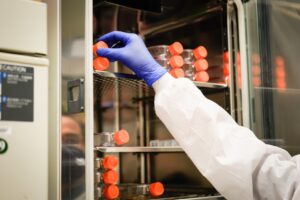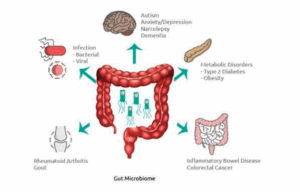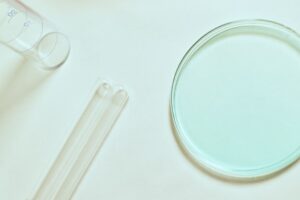By: Dr. Ron Najafi
CEO, Emery Pharma.
The world of chromatography has undergone a remarkable transformation, evolving from basic ink separation techniques to the sophisticated UPLC connected to HRMS Orbitrap technology we rely on today. This journey is not just a story of scientific advancement; it’s a testament to human ingenuity and the relentless pursuit of precision in analysis. From the early days when color gradients told the tale of compound separation to the modern era where high-resolution mass spectrometry paves the way for intricate molecular studies, each phase has brought us closer to understanding the complex world of chemicals.
Join us as we delve into this comprehensive exploration of chromatography’s evolution, highlighting key milestones, groundbreaking innovations, and the underlying principles that have shaped contemporary analytical methods. Whether you’re a seasoned chemist or a curious learner, this journey through time will illuminate the fascinating advancements that continue to influence research and industry today.
The Historical Context: Early Techniques in Ink Separation
Chromatography began with simple, ingenious experiments in the 19th century, such as ink separation on paper. By applying a drop of ink and allowing water to wick up the paper, the various colored dyes would separate—a process known as paper chromatography. Though rudimentary, this technique revealed the core principle of separation by differential affinity between stationary and mobile phases.
These experiments laid the foundation for analytical chemistry, offering a more visual and accessible way to understand compound separation. They sparked further innovation and refinement in chromatographic techniques, ultimately leading to the development of more sophisticated methods.
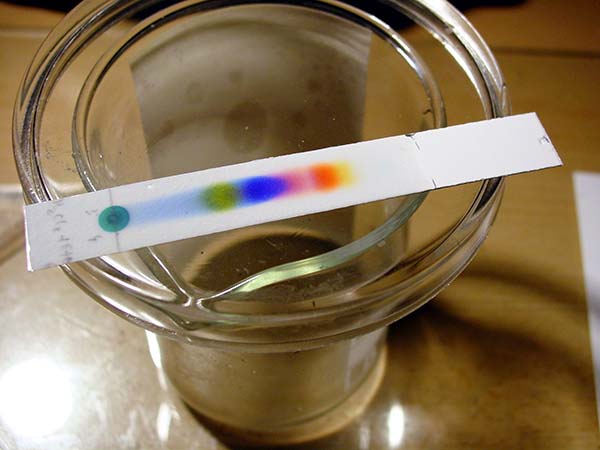
The Development of Liquid Chromatography
By the early 1900s, the limitations of paper chromatography drove the innovation of more advanced methods. In 1903, Russian botanist Mikhail Tsvet invented column chromatography. Using a glass column packed with calcium carbonate, he successfully separated plant pigments such as chlorophyll and carotenoids. This marked the first use of a liquid mobile phase and a solid stationary phase, pioneering what is now known as adsorption chromatography. On Mikhail Tsvet’s grave stone it is written: “He invented chromatography, separating molecules but uniting people”
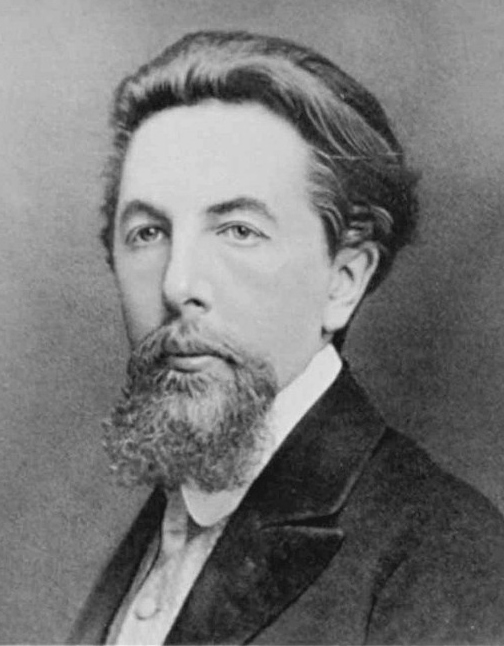
Mikhail Tsvet

Grave of Tsvet with the inscription: “He invented chromatography, separating molecules but uniting people”
This breakthrough inspired continued advancement. Over the decades, improvements in column materials, solvent systems, and detection technologies dramatically enhanced the capabilities of liquid chromatography. The introduction of synthetic resins, silica gels, and techniques such as UV absorption and refractive index detection expanded its applications across biochemistry and pharmaceuticals.
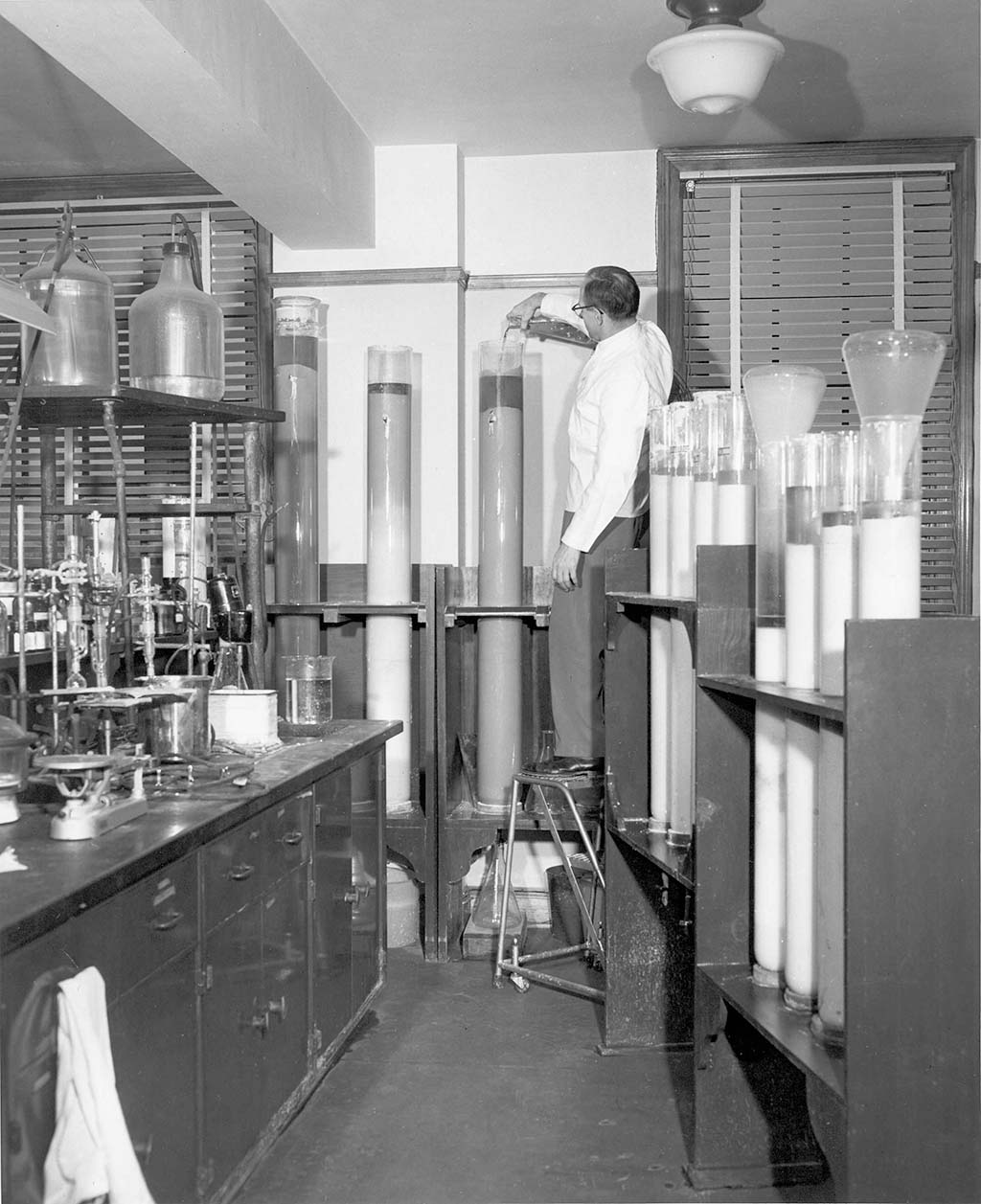
A chemist in the 1950s using column chromatography. The Erlenmeyer receptacles are on the floor.
Advancements in Gas Chromatography
While liquid chromatography matured, gas chromatography (GC) emerged as a powerful method for analyzing volatile compounds. In the early 1950s, Archer Martin and Richard Synge introduced partition chromatography, which formed the conceptual basis for GC. In 1952, A.T. James and Martin developed the first gas chromatograph, a major breakthrough for separating and detecting volatile organic compounds. Perkin Elmer 155 was the first gas chromatograph (GC) developed by The Perkin-Elmer Corporation. This instrument heralded the era of this versatile technique, which changed the way chemical analysis is carried out.
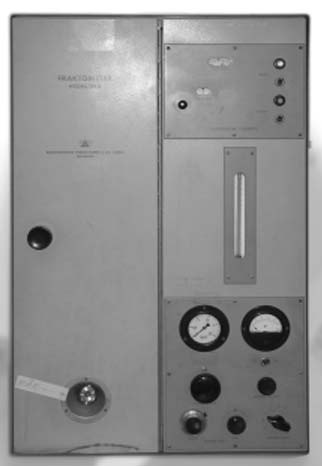
Model 155 GC by Perkin Elmer (1950) The Most widely used GC (aka: Vapor Fractometer) in 1950’s
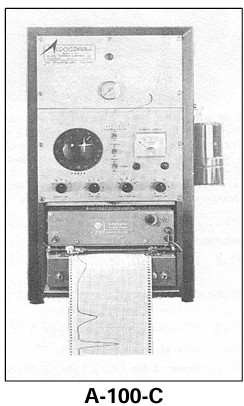
Varian Aeorograph GC model A-100C with Thermal Conductivity Detector (TCD)
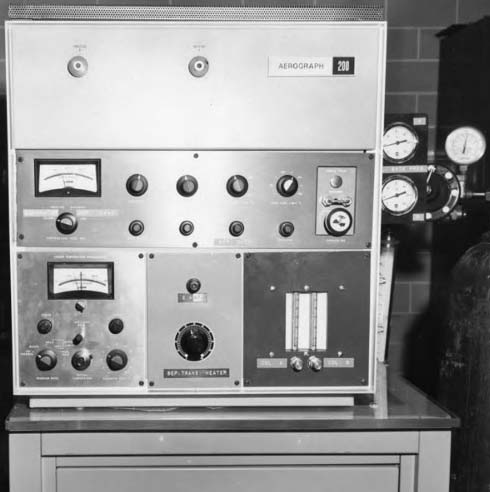
Early Gas Chromatography: Circa 1960’s (Varian Aerograph)
GC’s advantages included high resolution and speed, especially with the advent of capillary columns, multiple types of detectors such as: Thermal Conductivity Detector (TCD), Flame Ionization Detector (FID) and Mass Spec. which enable for rapid identification of unknowns based on mass and fragmentation patterns. These innovations made GC indispensable in petrochemical analysis, environmental testing, and forensic science. In Pharmaceutical development we use GCMS both for research and quality control. All drugs must have low levels of residual solvents. This typically utilizes Head Space analysis of drug products. Additionally, GCMS is extremely useful for bioanalysis when looking at analytes that are difficult to detect by traditional HPLC or LCMS.
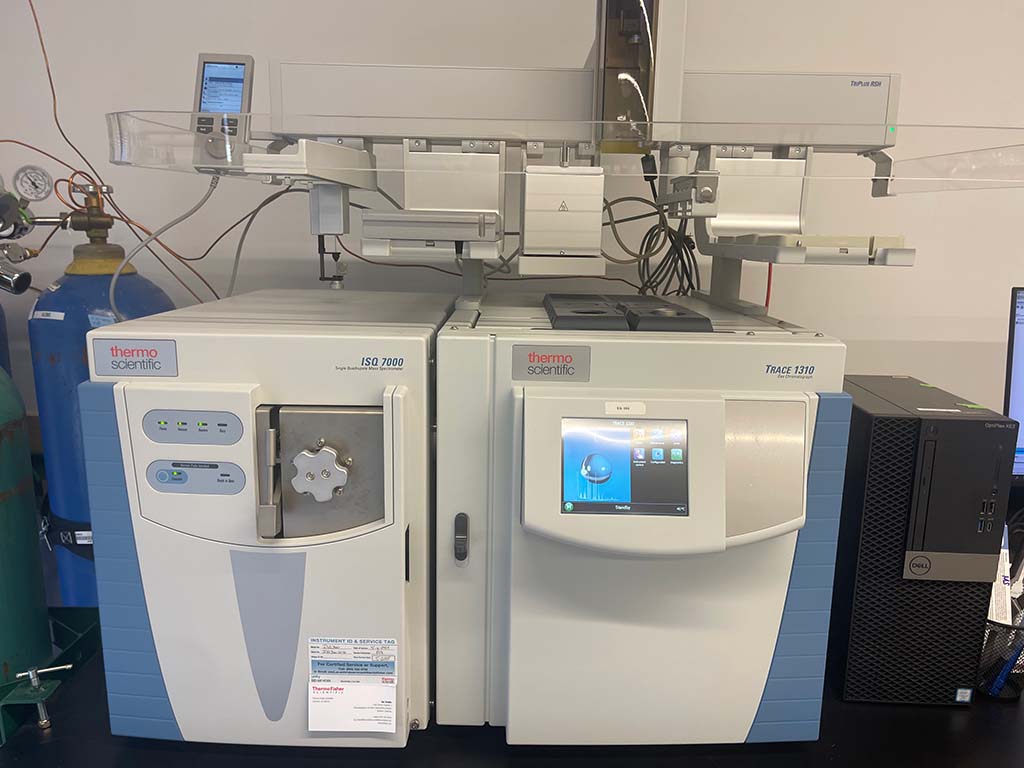
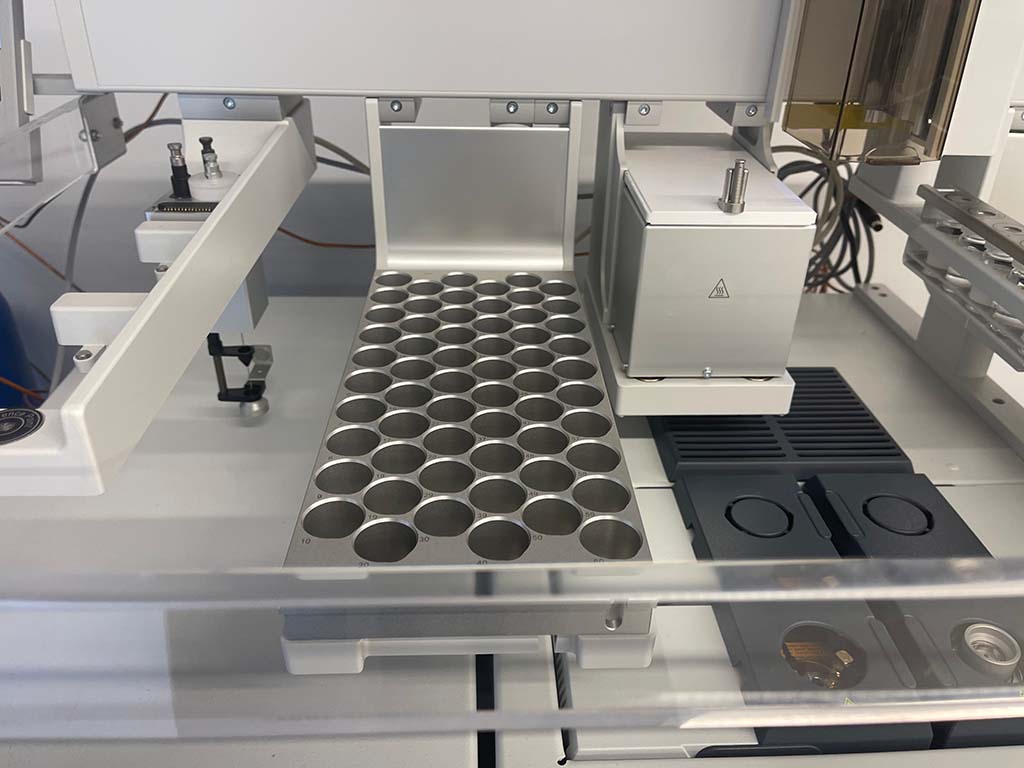
Emery Pharma’s facility 2025: Themo Scientific 1310 Gas Chromatography coupled to ISQ 7000 Mass Spectrometry.
My personal Journey with Early GC Instruments
From 1978 to 1982, I had the opportunity to work with early gas chromatography instruments at two academic institutions. My journey began at the University of San Francisco, where I worked under the mentorship of Professor John Soderquist using the Varian Aerograph Model 1520. These early experiences introduced me to the fundamentals of gas chromatography and sparked a lasting passion for analytical science.
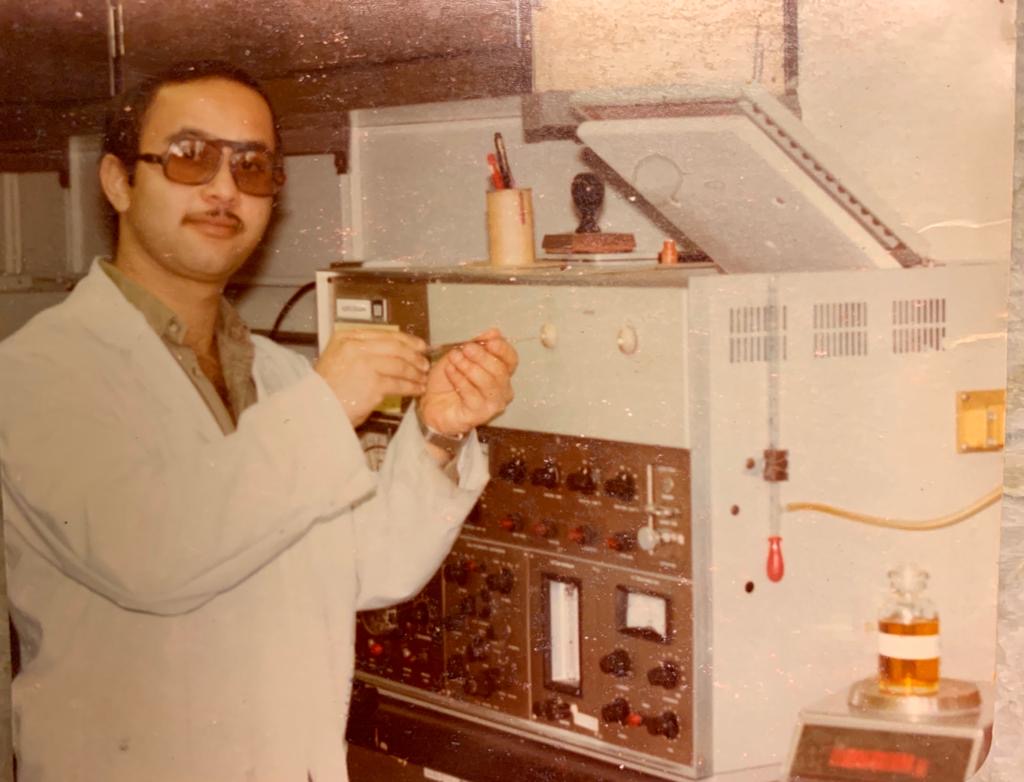
Varian – Aerograph model 1520b. Ron Najafi (undergraduate researcher) Analyzing the resulting hydroboration – oxidation of vinyltrimethylsilane. University of San Francisco – Department of Chemistry. circa ~ 1979
Today we are using the most advanced HS-GCMS / GC-FID (Head Space Gas Chromatography coupled to Single Quad Mass Spectrometer as well as a Flame Ionization Detector), manufactured by Thermo Scientific.
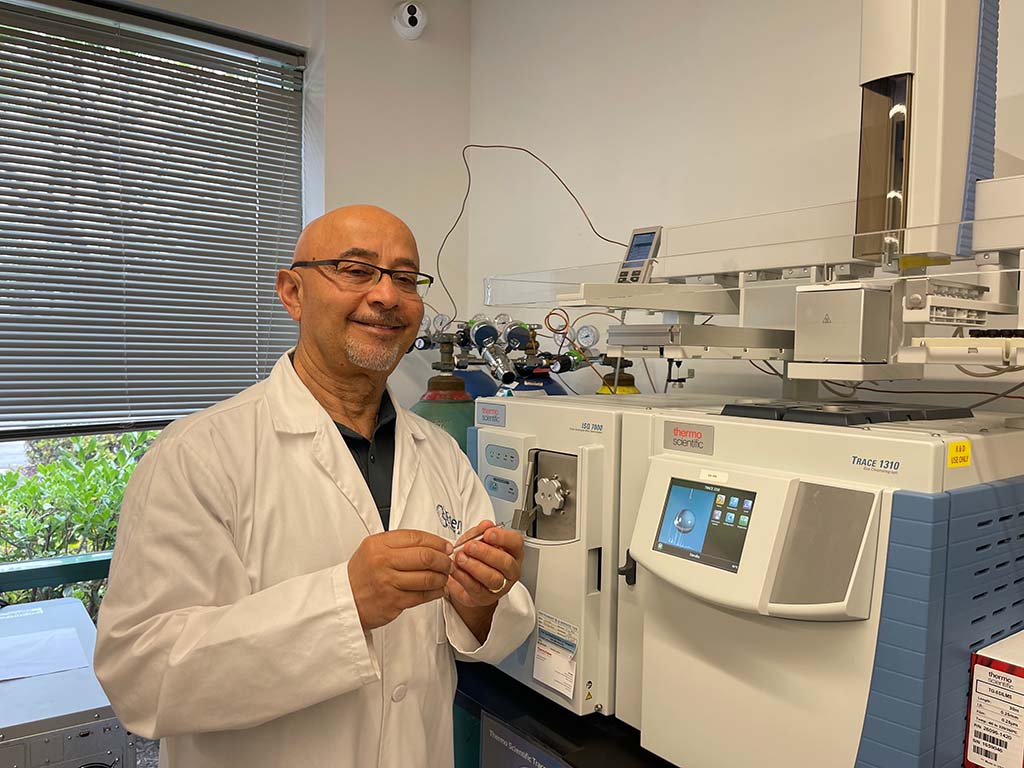
Ron Najafi, CEO of Emery Pharma standing in front of Emery Pharma’s Thermo Scientific HS-GCMS/GC-FID instrument. June 2025.
Later, during my time at UC Davis, I worked in the laboratory of Professor George Zweifel, where each researcher had access to their own Varian Aerograph Model 1440 GC. Dr. Zweifel strongly believed in ensuring lab efficiency and instrument accessibility, so no one would have to wait for equipment. This environment allowed me to deepen my skills and broaden my experience with GC instrumentation and method development.
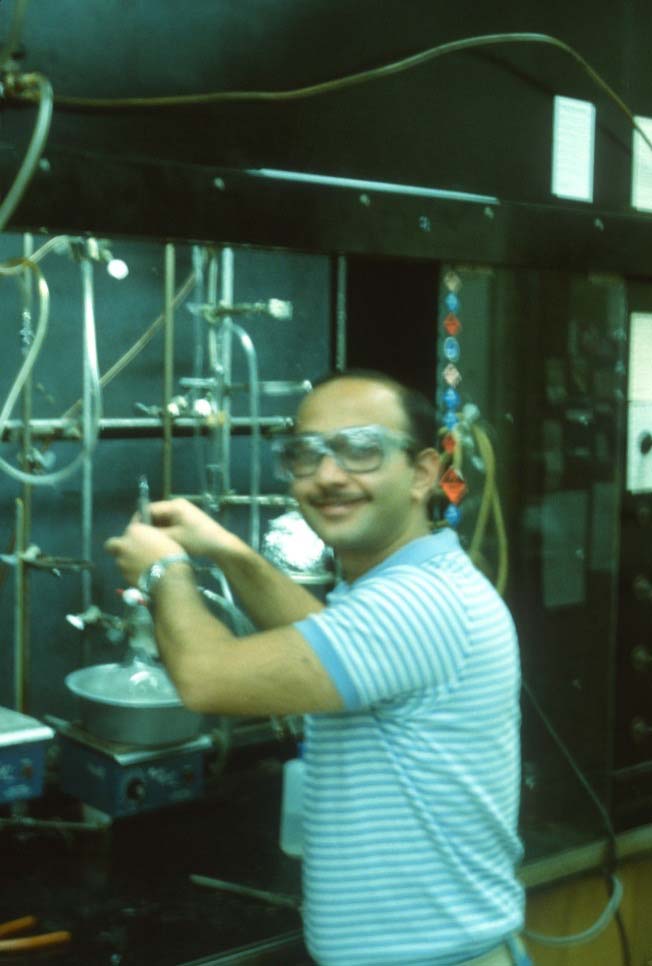
Ron Najafi at UC Davis, Dept. of Chemistry. Performing hydroalumination chemistry using Diisobutylalumium hydride (DIBAL) circa ~1984
We even conducted preparative gas chromatography, collecting fractions of interest by cooling effluent gases. In the early 1980s, we adopted capillary columns—then a new innovation—which significantly improved resolution and separation. These experiences not only deepened my understanding of GC but also exposed me to the evolving landscape of analytical instrumentation.
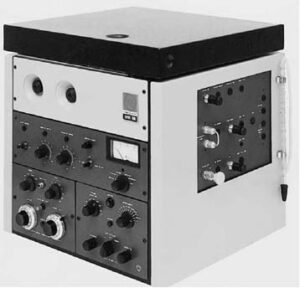
Aerograph model: 1440
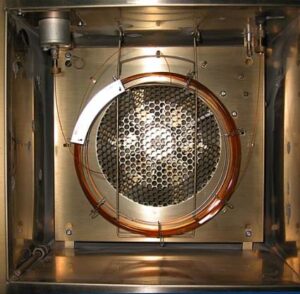
A gas chromatography oven, open to show a capillary colun
The Rise of High-Performance Liquid Chromatography (HPLC)
To meet the challenges of analyzing non-volatile (large molecules) or thermally unstable compounds, high-performance liquid chromatography (HPLC) was developed in the 1960s and 70s. With innovations like small, uniform particle size columns and high-pressure pumps, HPLC offered faster and more efficient separations. Techniques such as reversed-phase, ion-exchange, and size-exclusion chromatography broadened its applications.
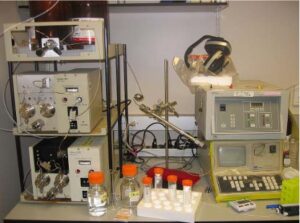
Early HPLC’s from late 1960’s
Today’s HPLC’s impact was amplified with improved detection systems, including diode-array detectors and mass spectrometry (LC-MS). These tools enabled precise quantification and identification of complex mixtures, solidifying HPLC’s role in modern analytical chemistry.
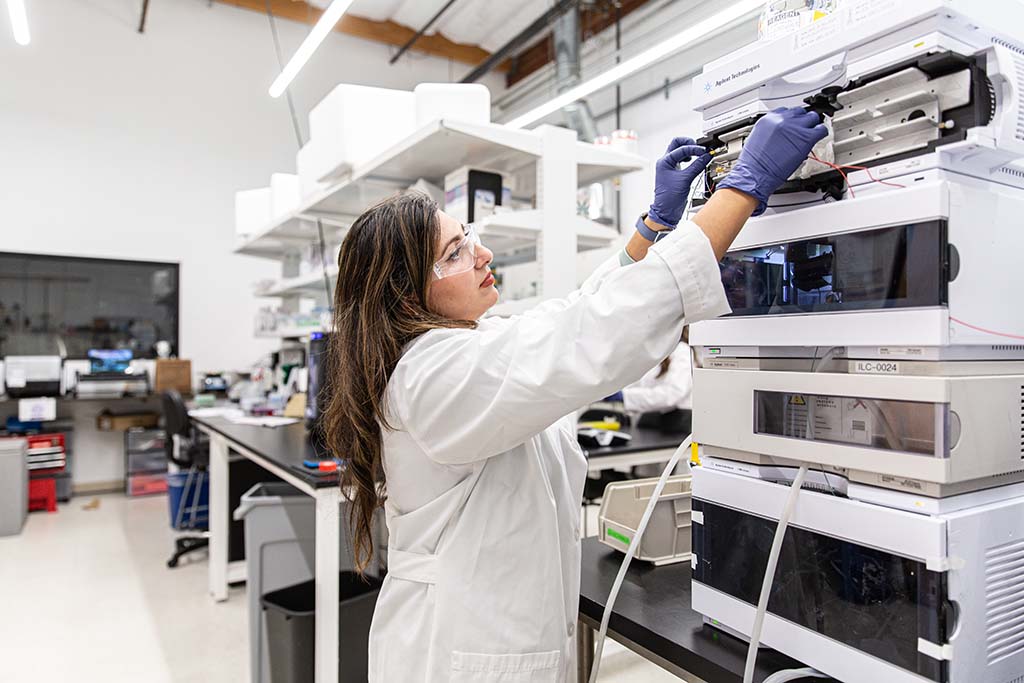
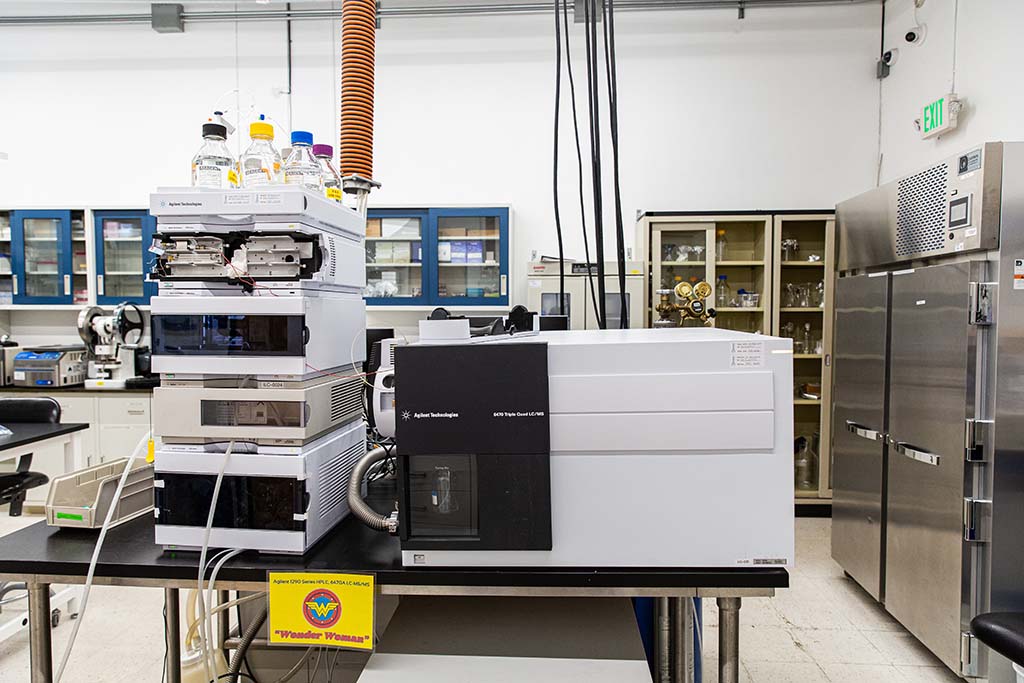
Emery Pharma facility – Agilent UPLC connected to an Agilent 6470 Mass Spectrometer
HPLC now plays a major role in Quality Control for much of our small molecule drug supplies throughout the world.
The Emergence of Orbitrap Technology
In the early 2000s, Orbitrap mass spectrometry revolutionized analytical science. Invented by Alexander Makarov, the Orbitrap provided unparalleled resolution and mass accuracy. It works by trapping ions in an electrostatic field and measuring their oscillation frequencies, offering exceptional resolving power and low mass error.
Coupling Orbitrap technology with liquid chromatography (LC-Orbitrap MS) enables in-depth analysis of complex biological and chemical samples. This fusion has advanced fields like proteomics, metabolomics, and drug discovery, making Orbitrap a cornerstone of high-resolution mass spectrometry.
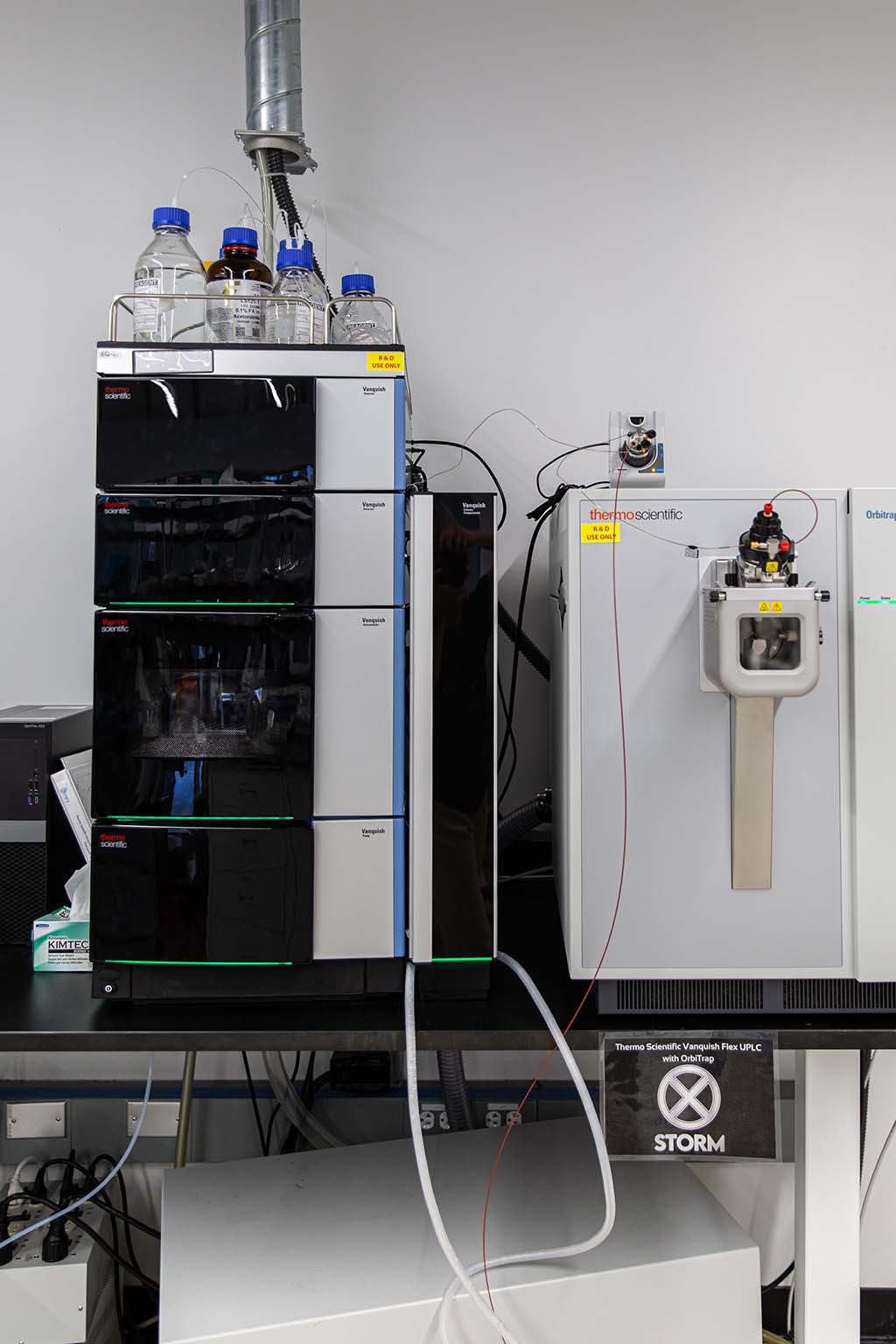
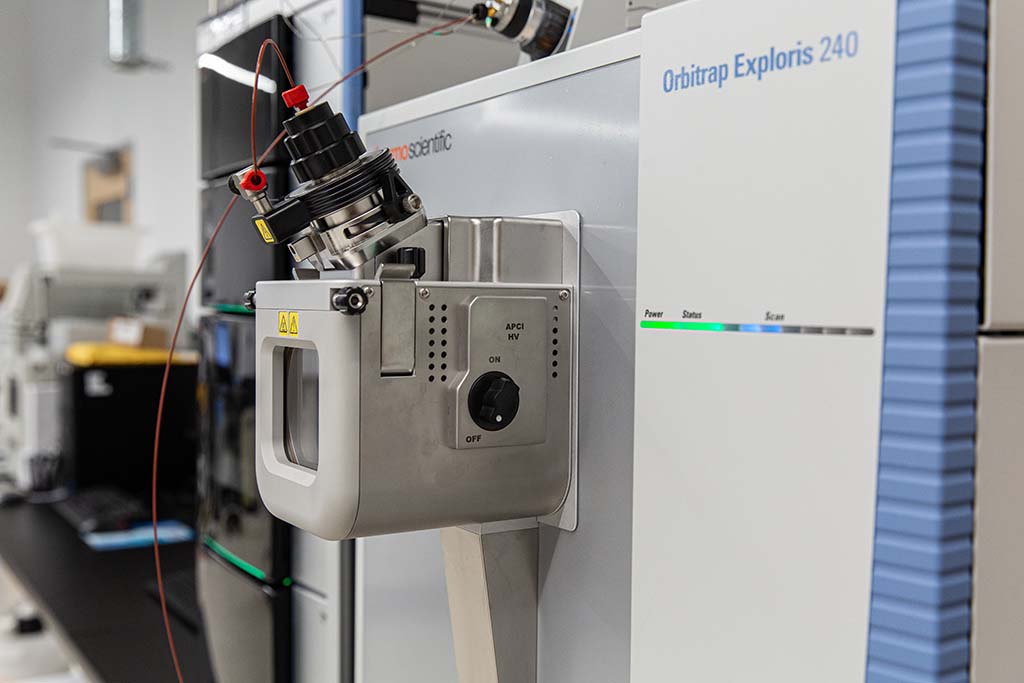
Emery Pharma Facility: Thermo Vanquish UPLC system coupled with a high-resolution Orbitrap mass spectrometer (Exploris 240)
Applications of Chromatography in Modern Science
Chromatography today is a linchpin in industries ranging from pharmaceuticals and biotechnology to environmental science and food safety. HPLC and GC are used extensively for impurity profiling, stability testing, and regulatory compliance. LC-MS and GC-MS have become gold standards for trace-level detection in clinical and forensic applications.
In biochemistry, chromatography is vital for purifying proteins and nucleic acids. In environmental monitoring, it’s used to detect pollutants and contaminants. In food science, it ensures product safety and authenticity. The power of chromatography lies in its ability to provide accurate, reproducible, and highly specific analytical data.
Future Trends in Chromatography
The future of chromatography is promising, with innovations in miniaturization, artificial intelligence (AI), and sustainability. Portable chromatographic systems are emerging, offering on-site analytical capabilities. AI and machine learning are being leveraged to optimize method development and data interpretation.
High-resolution mass spectrometry, particularly Orbitrap and TOF systems, continues to evolve, pushing the boundaries of molecular characterization. Sustainable practices—like reducing solvent use and adopting biodegradable materials—are aligning chromatography with green chemistry initiatives.
Conclusion: A Century of Progress
From its humble origins in ink separation to the sophisticated tools of today, chromatography has transformed the way we understand and manipulate chemical and biological systems. My own journey—from early Varian Aerograph Gas Chromatography model 1440 at UC Davis and 1520 at the University of San Francisco to witnessing the rise of LC-MS/MS and Orbitrap—mirrors this broader evolution.
Chromatography’s ability to separate, identify, and quantify complex mixtures has made it an indispensable part of scientific discovery. As new challenges and technologies emerge, chromatography will continue to adapt, innovate, and lead the way in analytical science.
At Emery Pharma, our passion for chromatography is unwavering. We believe that the power of separating molecules—through gas chromatography, mass spectrometry, and a host of other analytical techniques—is at the heart of discovering new medicines, advancing human health, and ultimately bringing people together. As inscribed on the gravestone of Mikhail Tsvet, the inventor of chromatography: “He invented chromatography, separating molecules but uniting people.” This sentiment captures our belief in the profound human impact of scientific discovery. If you’re facing analytical challenges or exploring new frontiers in drug development, we welcome the opportunity to collaborate. Please feel free to reach out to us at Emery Pharma online or call us at +1 (510) 899-8814!
